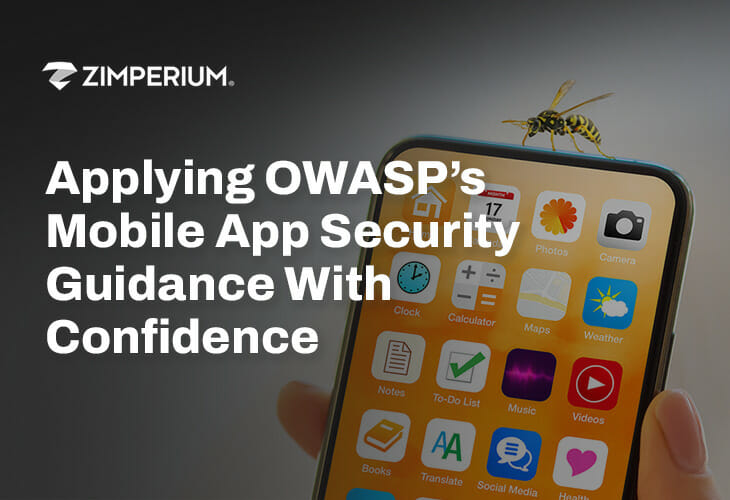
Banking app cybersecurity refers to the comprehensive set of measures, protocols, practices, and technologies implemented by banks and financial institutions to ensure the security, privacy, and protection of sensitive financial and personal data within their mobile banking applications. The primary objective of banking app cybersecurity is to safeguard the institution’s and its customers’ assets by preventing unauthorized access, fraud, data breaches, and other cyber threats.
The Importance of Banking App Cybersecurity
Mobile banking has helped revolutionize financial services, offering unprecedented convenience and accessibility. Yet with this innovation comes an increased need for robust cybersecurity measures to protect sensitive financial data from the prying eyes of cybercriminals. Their ubiquity has also drawn in cybercriminals who devise sophisticated techniques to exploit vulnerabilities to gain unauthorized access to sensitive user data – from account takeover and identity theft through financial fraud to malware attacks – the stakes for banking app cybersecurity are tremendously high.
Key Banking App Cybersecurity Concerns of Mobile App Developers
Mobile app developers committed to upholding the highest security standards are faced with several considerations when developing and maintaining banking apps:
- Encryption: Encryption is an essential component of banking app cybersecurity. Communication between mobile devices and servers should be encrypted to protect against interception or unapproved access; end-to-end encryption ensures that only authorized parties can access stored information.
- Authentication and Authorization: Robust authentication mechanisms ensure that only authorized users can access accounts. Multi-factor authentication (MFA) adds another level of protection by requiring users to provide multiple verification forms, such as passwords, fingerprint scans, or facial recognition, before giving access.
- Secure Coding Practices: Developers should utilize secure coding practices in their code to reduce vulnerabilities within their app’s code, which reduces cybercrime risks by identifying and fixing flaws or weaknesses that exist within it. By doing this, developers can reduce risks posed by cybercriminals exploiting this code flaw or defect and exploit it more quickly than before.
- Regular Security Audits and Vulnerability Assessments: Regular security audits and vulnerability assessments help institutions detect and address potential weaknesses in the infrastructure and codebase of an app, thus closing security gaps before cyber attackers exploit them.
- Real-Time Fraud Detection: Implementing real-time monitoring and fraud detection mechanisms is critical to quickly detecting suspicious activities and transactions and stopping fraudulent acts. Real-time detection helps identify these actions quickly to allow quick intervention to prevent fraudster actions from taking place.
- Secure APIs: Application Programming Interfaces (APIs) connect mobile apps to backend systems, so it is crucial to secure these APIs against unauthorized access, data leakage, and potential breaches.
- User Education: Informing users of cybersecurity best practices, including robust passwords, avoiding public Wi-Fi for sensitive transactions, and being wary of phishing attempts, can increase their ability to protect themselves effectively.
- Device Security: Ensuring the security of user devices is of paramount importance. Apps must detect and prevent actions on rooted or jailbroken devices that are more vulnerable to attacks. Developers should prioritize device security. By including features that detect and prevent activities on rooted or jailbroken devices – often more susceptible to attacks – developers can protect the security of the user.
- Patch Management: Maintaining regular updates and patches to address known vulnerabilities is vital for avoiding potential threats.
- Incident Response Plan (IRP): Implementing an incident response plan allows institutions to quickly respond to security incidents or data breaches, mitigating damage as effectively as possible and mitigating risk.
- Compliance: Banking app cybersecurity must adhere to industry regulations and standards, such as Payment Card Industry Data Security Standard (PCI DSS) and General Data Protection Regulation (GDPR). Banking app cybersecurity is of utmost importance because of the extreme sensitivity of financial transactions and the potential repercussions of security breaches. A breach in banking app security could result in unauthorized access, financial fraud, identity theft, and erosion of customer trust – with financial repercussions and legal and reputational damage for financial institutions.
Today’s digital environment, where mobile banking apps provide convenient access to accounts and financial services, poses unique cybersecurity threats that must be managed appropriately by both consumers and financial institutions. Implementing robust cybersecurity measures provides users a safe space to manage their finances while protecting assets and reputations from potential cyber threats.
Best Practices for Banking App Cybersecurity
To meet the highest security standards in banking apps, mobile app developers must follow certain practices:
- Secure Coding Practices and Standards: Adherence to secure coding practices can help decrease vulnerabilities within an app’s codebase and thus minimize risks.
- Maintain Regular Updates: For maximum protection, update your app with the latest security patches and updates to address any vulnerabilities discovered in real-time quickly.
- Encryption: Implement end-to-end encryption to protect data throughout its travel between apps and backend systems.
- User Education: Provide users with education about cybersecurity best practices, such as using public Wi-Fi for sensitive transactions and regularly reviewing account activity.
- Biometric Authentication: Implement biometric authentication techniques like fingerprint and facial recognition to increase user convenience and security.
- Offline Mode Security: Ensure that sensitive operations, such as transactions, cannot be initiated offline and reduce the risk of unintended actions by third parties.
- Third-Party Integrations: When considering third-party integrations, ensure they adhere to your high security standards.
Banking app cybersecurity is an ongoing battle that demands commitment from mobile app developers. Developers are heavily responsible for safeguarding millions of users’ financial well-being and trust as the digital landscape transforms. As cyber threats evolve, their developers bear a heavy load in keeping users protected financially and protecting their security and trust. By prioritizing secure coding practices, strong encryption, multi-factor authentication, and continuous monitoring, developers can build banking apps that offer seamless financial services and serve as a powerful deterrent against cybercrime.
